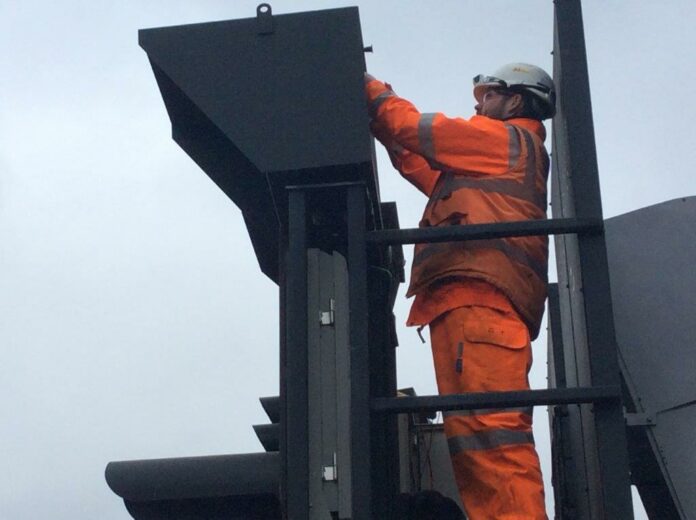The UK’s biggest ever signalling upgrade is a step closer to completion as Network Rail carried out a significant stage of a six-year project to modernise signalling equipment in the Bristol and Bath area over the weekend (11-12 May). The introduction of the upgraded signalling system will allow more trains to run on the network in the future, helping to meet growing passenger demand.
The work carried out by Network Rail over the weekend of 11-12 May means that all the new infrastructure is in place, ready for further testing to take place on 23 June and 7 July. This new equipment means that operation of signals in the Bristol area will be run from one of the largest and most technologically advanced signalling centres in the UK, located in Didcot.
Signalling is essentially a sophisticated traffic light system for the railway, enabling trains to move safely around the network and telling the train driver what to do next. A coloured light is displayed to authorise the driver to proceed or show that the train must stop. Many signals also indicate which direction the train must go.
Signals are a crucial part of the railway infrastructure, keeping trains safely apart and allowing for long stopping distances. The signals themselves are positioned alongside the railway and tell trains drivers when it is safe to proceed, and what route they will be taking. The broader signalling system incorporates ways of determining the position of trains and operating the points- the mechanism that controls which direction trains will take.
The modernisation of the signalling system is essential to ensure that the railway can meet growing passenger demand, and will allow more trains to run on the network in the future. Over the last six-years, Network Rail has been working to upgrade the signalling system in the Bristol area, disconnecting and removing old equipment from the 1960s and ‘70s, and replacing it with a new state-of-the-art system that is linked to the high-tech digital control centre in Didcot.
The work, combined with the doubling of the railway tracks in the Filton area of the city, improves the resilience of the network and means that passengers will benefit from a more reliable railway.
Project director for Network Rail, Jonathan Davies said: “The signalling work that we have now completed in the Bath area and into Wiltshire is a continuation of the country’s largest ever resignalling scheme and is part of our Railway Upgrade Plan.
“This combined with other recent upgrades in the Bath and Bristol area will transform travel for passengers in the two cities with a more reliable network as well as enable GWR to introduce more services later this year.”
Councillor Kye Dudd, Cabinet Member with responsibility for transport & energy at Bristol City Council said: “As one of the fastest growing cities in the UK, it is important that our transport infrastructure is modernised to meet the demand. We welcome this vital upgrade which will deliver more frequent and reliable journeys, contributing to our commitment to better, more accessible sustainable transport options across the city.”
GWR operations director Rob Mullen said: “These vital improvements will allow us to make the most of our new Intercity Express Trains, not only in delivering more seats, but with the completion of the electrification of the GWR mainline, more frequent and quicker journeys.”







































 0113 2082620
0113 2082620 info@railbusinessdaily.com
info@railbusinessdaily.com 15 Mariner Court, Wakefield WF4 3FL
15 Mariner Court, Wakefield WF4 3FL

